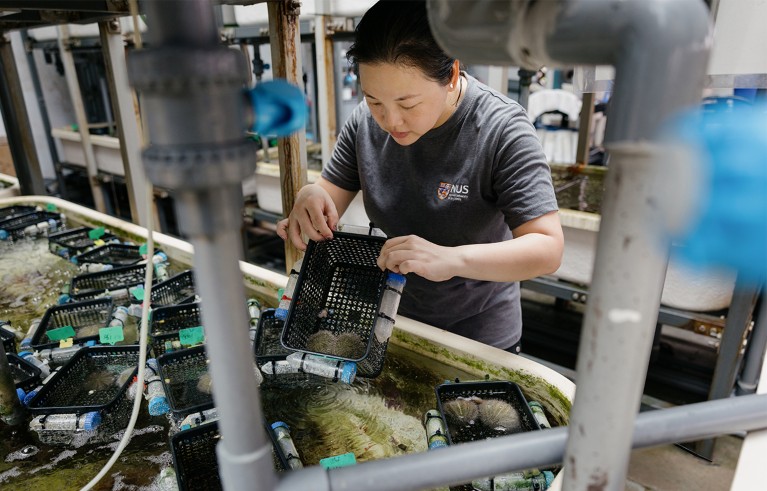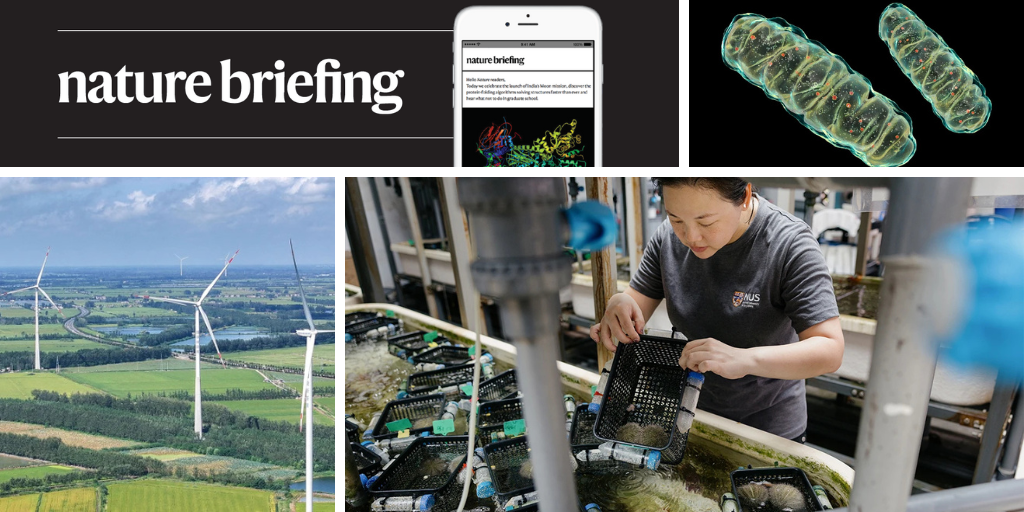You have full access to this article via your institution.
Hello Nature readers, would you like to get this Briefing in your inbox free every day? Sign up here.
Mitochondria (illustration) have their own DNA, which they expel into their environment if the molecules don’t meet their standards.Credit: Kateryna Kon/Science Photo Library
Mitochondria — the powerhouses of the cell — expel ‘tainted’ DNA into their surroundings. In mice, researchers found that the organelles spit out strands of mitochondrial DNA (mtDNA) that contained an excess of a certain type of molecular building block that can harm DNA. This genetic fly-tipping might protect the mitochondria, but free-floating mtDNA in a cell kick-starts key inflammatory pathways associated with ageing. The findings hint at mitochondria’s role in ‘inflammageing’ — chronic inflammation that occurs as we get older.
Nature | 4 min read
Reference: Nature paper
Chinese president Xi Jinping has announced that, by 2035, China will reduce greenhouse gas emissions by 7-10% from their peak level. In 2020, Xi pledged that China’s CO2 emissions would reach their peak before 2030, a milestone some researchers think might have been reached already. As the largest emitter in the world, the pace of China’s cuts will have profound global impact: if met, this target would be the equivalent to “three UKs completely decarbonizing over the next decade”, says climate physicist Piers Forster. But the goal — a proportion of an undefined amount — leaves room for short-term increases, and anyway might not be enough to keep warming below the 1.5-2 ℃ set in the Paris agreement.
Nature | 5 min read
Lab leaders who want to produce innovative research should welcome ‘beginner’ scientists with little or no prior publication history, suggests a new preprint study. A team looked at more than 28 million articles and scored them for ‘disruption’ — being cited more times than the papers it referenced were. Across team sizes, decades and disciplines, “as the fraction of beginners increases in teams, the disruptivity and innovation go up”, says computational social scientist and co-author Raiyan Abdul Baten. He credits newbies for having “less loyalty to prevailing assumptions”.
Nature | 5 min read
Reference: arXiv preprint
Features & opinion
The New Model Institute for Technology and Engineering (NMITE) in Hereford discards much of the traditional approach to higher education, eschewing the competition for international students and focusing on training work-ready graduates in a city with one of the lowest university participation rates in England. The institution prioritizes hands-on experience, with no lectures, essays or exams, and a schedule that closely resembles a full-time job. “Speaking to hundreds of companies, one thing they said to me was: you send us engineering graduates, and we have to train them again,” says NMITE’s first chief executive and president Elena Rodríguez-Falcón.
Nature | 13 min read
Read the full collection in Nature: Universities made the modern world — now they must survive it
Two articles in The New York Times provide sobering pictures of childhood malnourishment in different parts of the world. In Gaza, the ongoing conflict and the restrictions on aid flowing into the territory mean many young children are deprived of sufficient food. A series of graphics illustrate why they are especially vulnerable to malnourishment, how it harms young bodies and how its effects can last a lifetime.
Meanwhile, Pulitzer-prizewinning journalist Nicholas Kristof travels to southwestern Uganda, where the impact of Trump-administration cuts to humanitarian aid is “accelerating”. “Stockpiles of food and medicine are running out here. Village health workers who used to provide inexpensive preventive care have been laid off. Public health initiatives like deworming and vitamin A distribution have collapsed. Immunizations are being missed,” writes Kristof. “And because children are particularly vulnerable, they are often the first to starve and the first to die.”
The New York Times | 6 min read & The New York Times | 12 min read
Where I work

Mei Lin Neo is a marine ecologist in the Tropical Marine Science Institute at the National University of Singapore.Credit: Juliana Tan for Nature
Ecologist Mei Lin Neo studies how marine invertebrates such as sea urchins (Salmacis sphaeroides) react to changes in their environments. The organisms her group studies also act as guards against extinction — if an event such as disease ravages wild populations, Neo is confident they could renew the natural stock. “People don’t realize how charismatic a seemingly static marine animal can be,” she says. “I want to champion lesser-known marine species.” (Nature | 3 min read)
On Friday, Leif Penguinson was exploring a gorge on the River Kaveri in Mekedatu, India. Did you find the penguin? When you’re ready, here’s the answer.
Thanks for reading,
Flora Graham, senior editor, Nature Briefing
With contributions by Jacob Smith
Nature Briefing: Careers — insights, advice and award-winning journalism to help you optimize your working life
• Nature Briefing: Microbiology — the most abundant living entities on our planet — microorganisms — and the role they play in health, the environment and food systems
• Nature Briefing: Anthropocene — climate change, biodiversity, sustainability and geoengineering
• Nature Briefing: AI & Robotics — 100% written by humans, of course
• Nature Briefing: Cancer — a weekly newsletter written with cancer researchers in mind
• Nature Briefing: Translational Research — covers biotechnology, drug discovery and pharma

